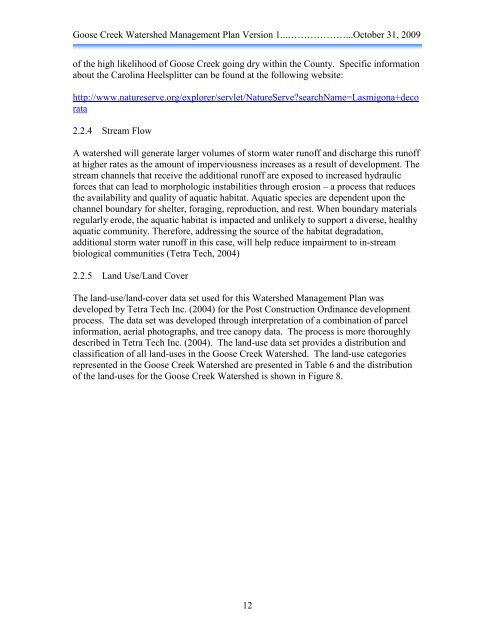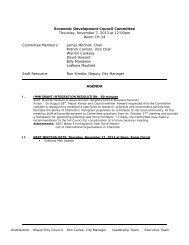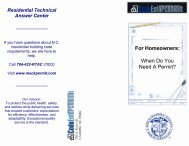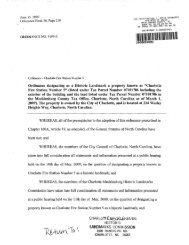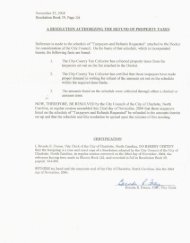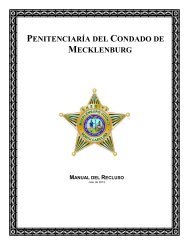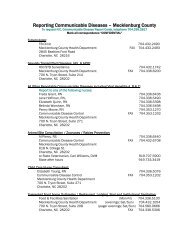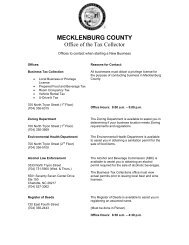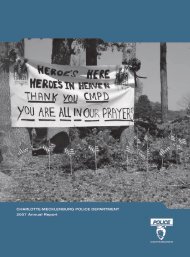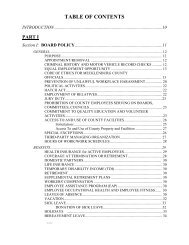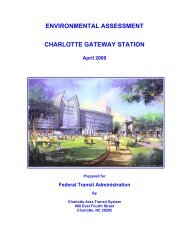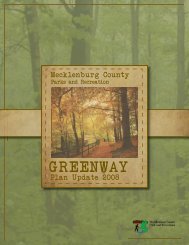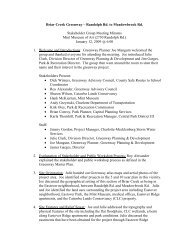Goose Creek Watershed Management Plan Version - Charlotte ...
Goose Creek Watershed Management Plan Version - Charlotte ...
Goose Creek Watershed Management Plan Version - Charlotte ...
You also want an ePaper? Increase the reach of your titles
YUMPU automatically turns print PDFs into web optimized ePapers that Google loves.
<strong>Goose</strong> <strong>Creek</strong> <strong>Watershed</strong> <strong>Management</strong> <strong>Plan</strong> <strong>Version</strong> 1...………………...October 31, 2009<br />
of the high likelihood of <strong>Goose</strong> <strong>Creek</strong> going dry within the County. Specific information<br />
about the Carolina Heelsplitter can be found at the following website:<br />
http://www.natureserve.org/explorer/servlet/NatureServe?searchName=Lasmigona+deco<br />
rata<br />
2.2.4 Stream Flow<br />
A watershed will generate larger volumes of storm water runoff and discharge this runoff<br />
at higher rates as the amount of imperviousness increases as a result of development. The<br />
stream channels that receive the additional runoff are exposed to increased hydraulic<br />
forces that can lead to morphologic instabilities through erosion – a process that reduces<br />
the availability and quality of aquatic habitat. Aquatic species are dependent upon the<br />
channel boundary for shelter, foraging, reproduction, and rest. When boundary materials<br />
regularly erode, the aquatic habitat is impacted and unlikely to support a diverse, healthy<br />
aquatic community. Therefore, addressing the source of the habitat degradation,<br />
additional storm water runoff in this case, will help reduce impairment to in-stream<br />
biological communities (Tetra Tech, 2004)<br />
2.2.5 Land Use/Land Cover<br />
The land-use/land-cover data set used for this <strong>Watershed</strong> <strong>Management</strong> <strong>Plan</strong> was<br />
developed by Tetra Tech Inc. (2004) for the Post Construction Ordinance development<br />
process. The data set was developed through interpretation of a combination of parcel<br />
information, aerial photographs, and tree canopy data. The process is more thoroughly<br />
described in Tetra Tech Inc. (2004). The land-use data set provides a distribution and<br />
classification of all land-uses in the <strong>Goose</strong> <strong>Creek</strong> <strong>Watershed</strong>. The land-use categories<br />
represented in the <strong>Goose</strong> <strong>Creek</strong> <strong>Watershed</strong> are presented in Table 6 and the distribution<br />
of the land-uses for the <strong>Goose</strong> <strong>Creek</strong> <strong>Watershed</strong> is shown in Figure 8.<br />
12


